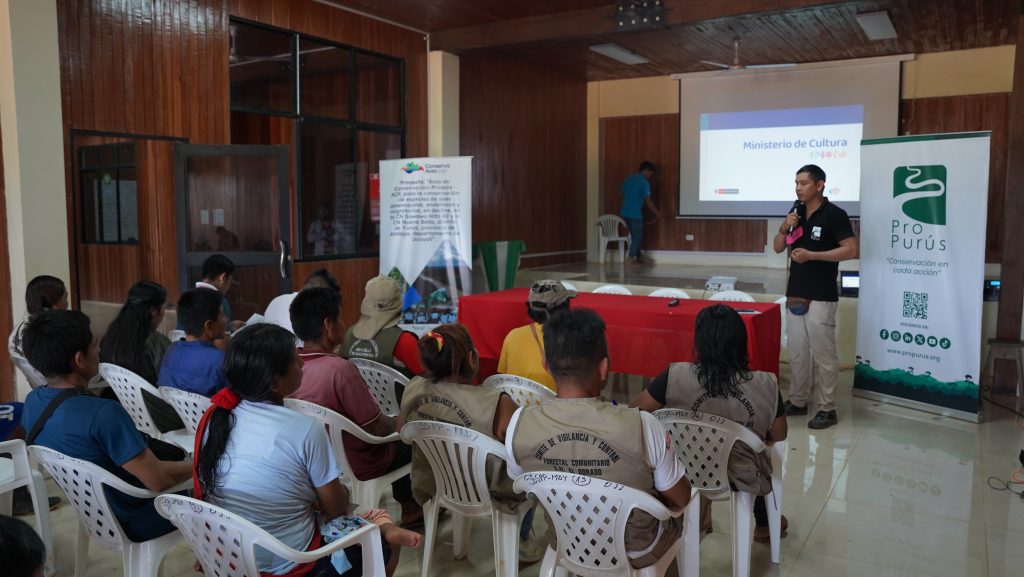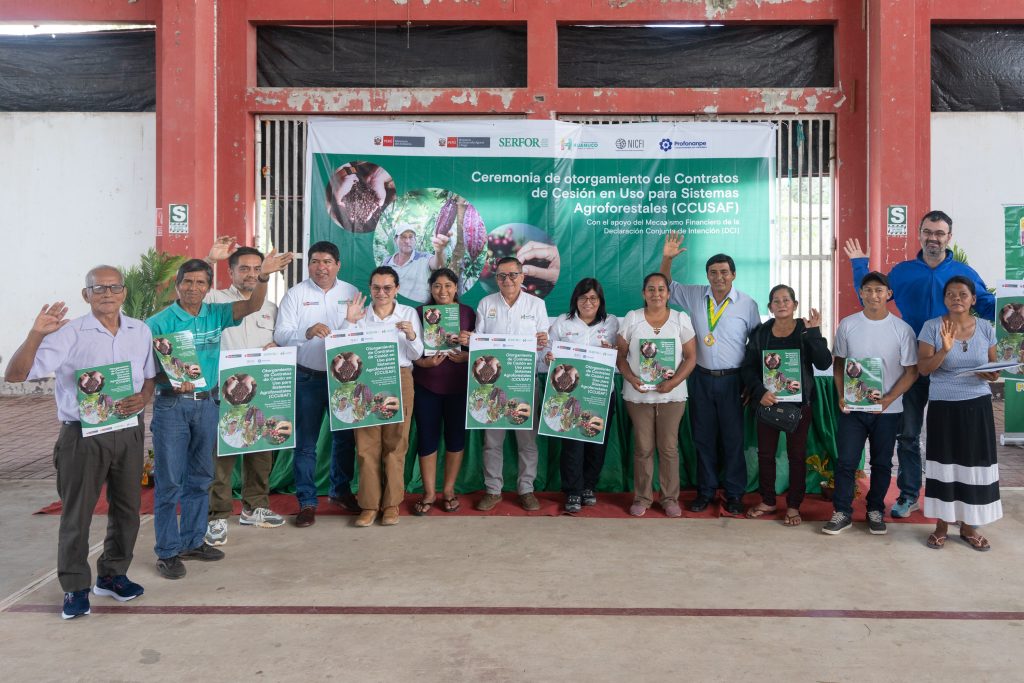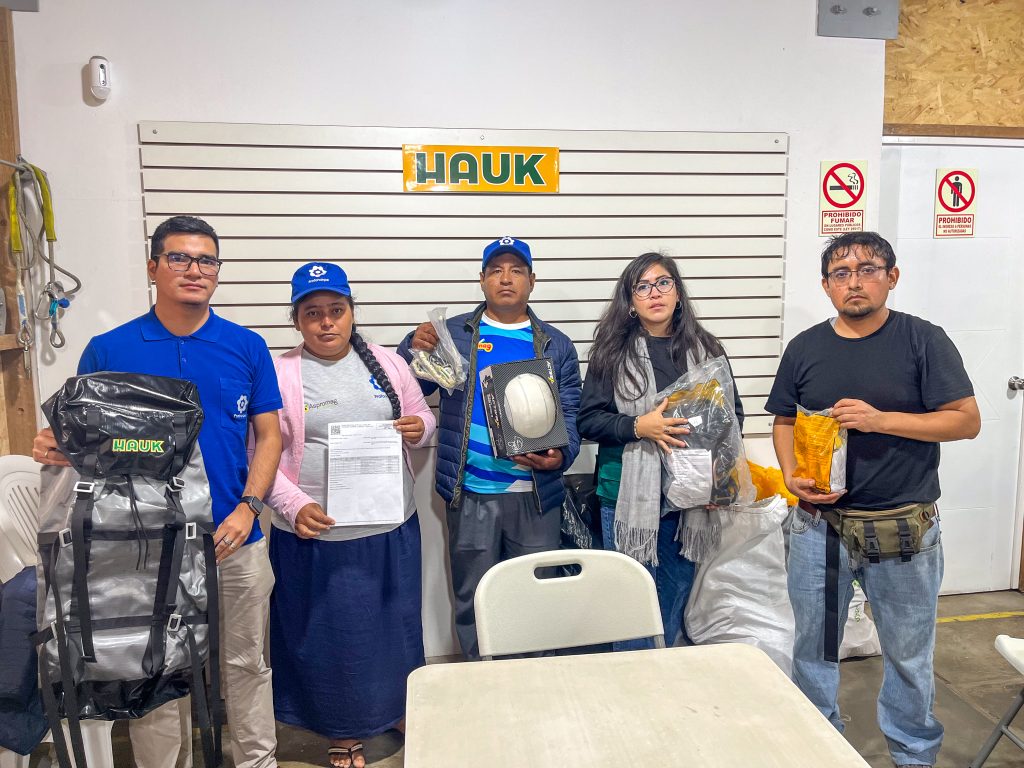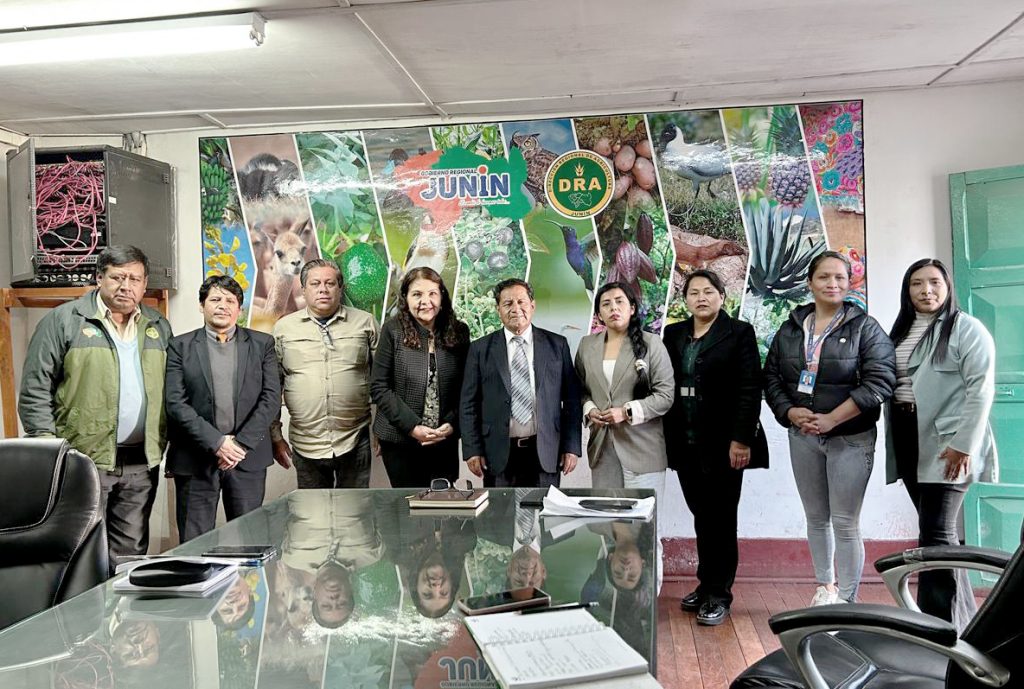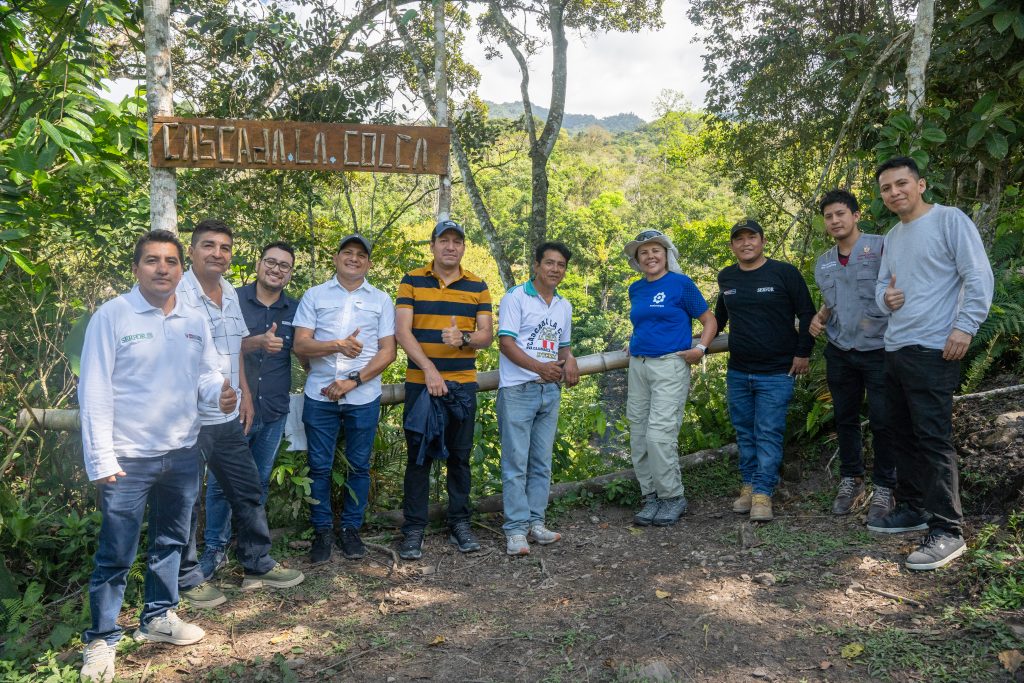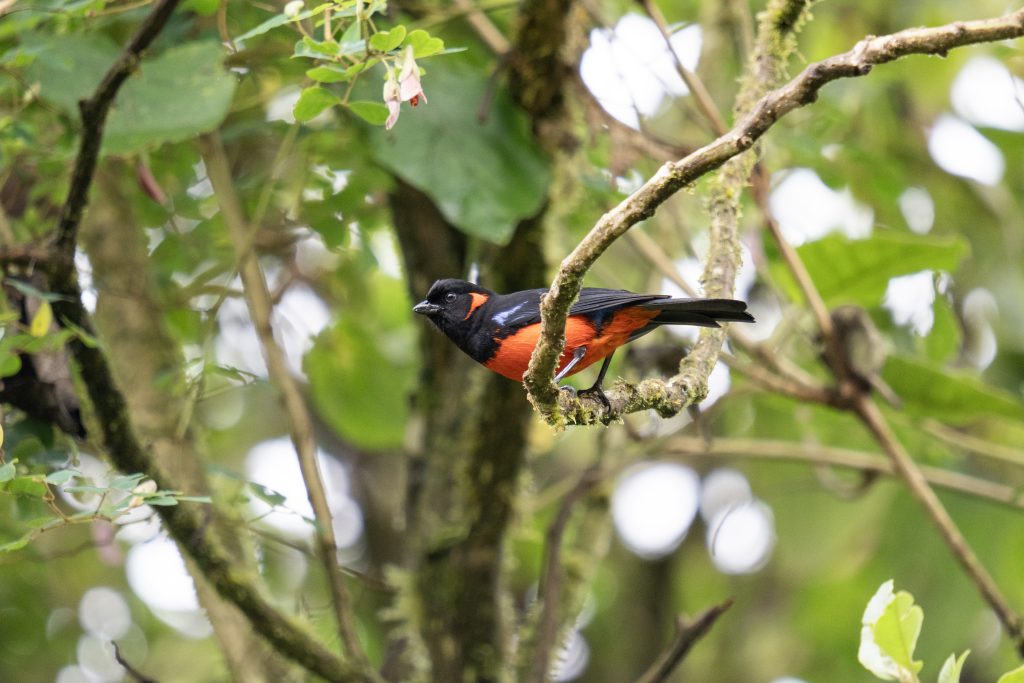Sunrise over the high altimontane yunga forests within the proposed project area.
Photo: Jonathan Chancasana
The proposal to create the “Huata Private Conservation Area” has made significant progress since it began in February, after months of work with the Huata farming community, under the leadership of the Andinus Association and with the support of the Conserva Aves initiative.
The advances help in the mission to conserve and protect the native altimontane (pluvial) forests of Yunga and its headwaters. The project aims to protect the habitat of the Atlapetes melanopsis, an endangered species according to the Red Book and in a near-threatened situation according to the International Union for Conservation of Nature (IUCN), as well as other species close to the area and of conservation interest. From a perspective that seeks to generate direct opportunities for sustainable development for local communities, the project seeks to empower the rural community of Huata with respect to the future of the region, allowing them to conserve different species within the proposed space to safeguard the territories of life.
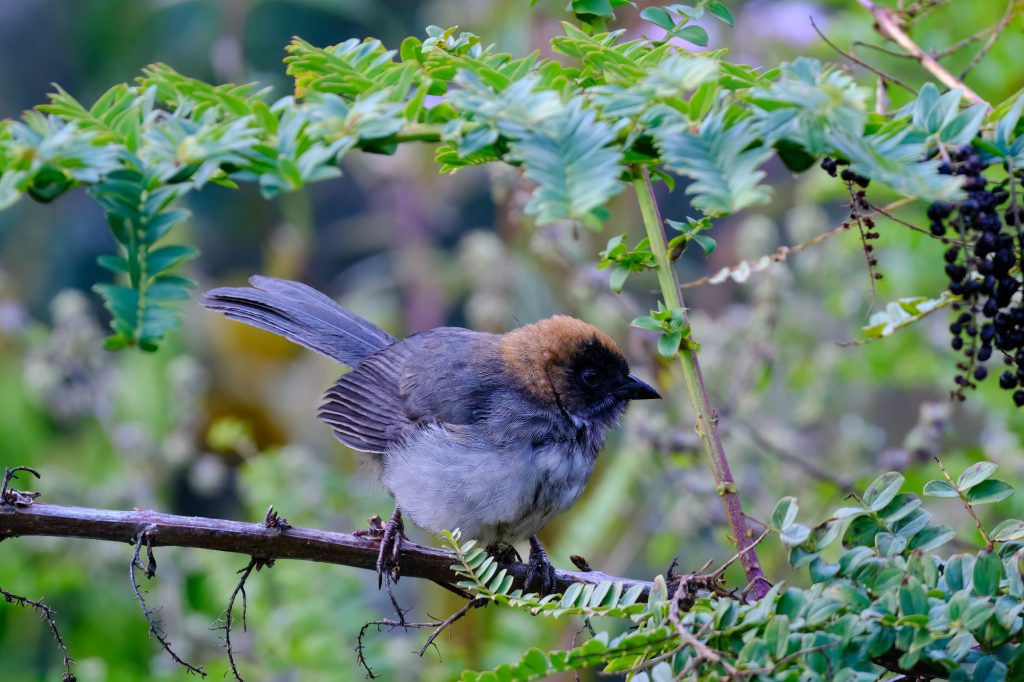
Juvenile specimen of the black-spectacled brushfinch (Atlapetes melanopsis), endemic and threatened species; both in the Peruvian red book and in the IUCN.
Photo: Jonathan Chancasana
Key project milestones:
- To date, more than 12 community assembly meetings have been held to socialize the project and sign agreements.
- Participation in two project dissemination fairs in the Andamarca district plaza.
- Signing of an agreement for collaborative work between the Andinus association and the rural community of Huata.
- Elaboration of the social baseline
- Elaboration of the biological baseline and realization of the first monitoring.
- Alliance with the Universidad Peruana Los Andes for cooperation with social projection group for support in the implementation of a nursery (part of the habitat restoration component).
- Painting of Muraves as part of the first phase of the environmental education plan.
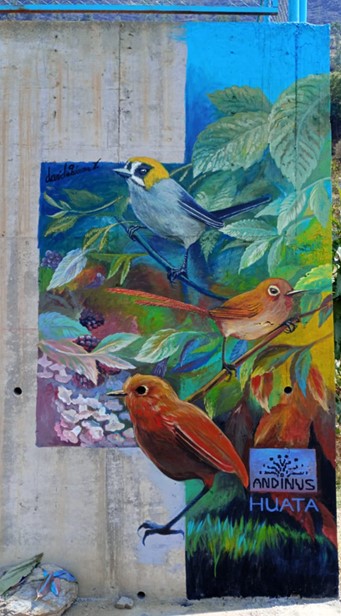
First phase of a mural alluding to the species of interest within the area
The peasant community of Huata, under previous coordination, has allowed the entrance to their areas, and in this way to carry out the different field trips. This has helped to establish the various advances in the components of the project proposal; likewise, the results and findings of the biological baseline have been shared with the community.
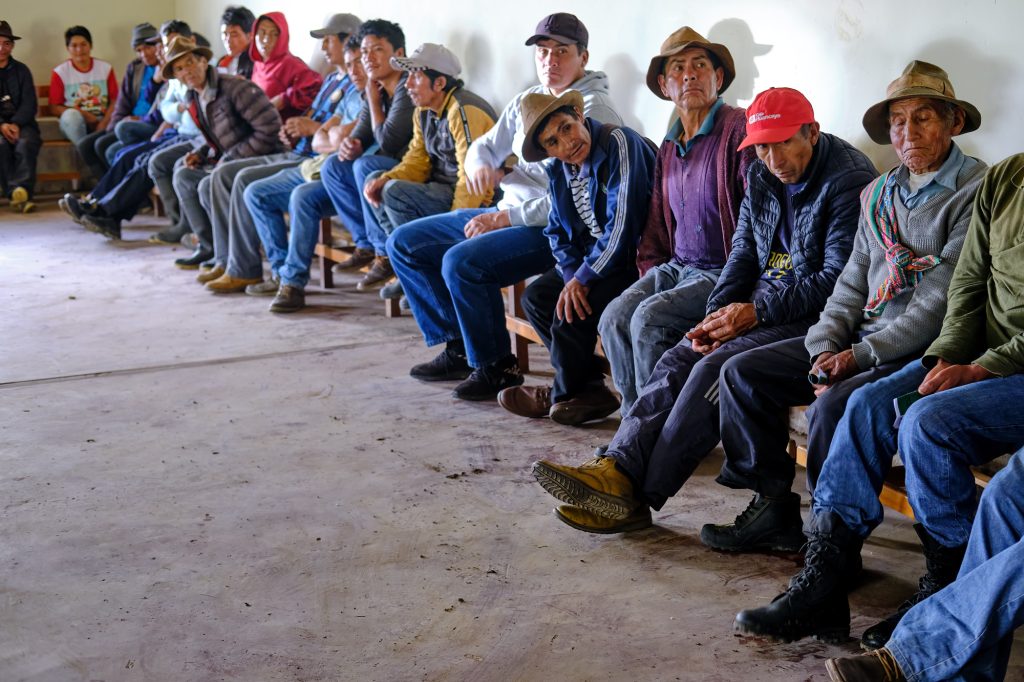
Coordination meeting in the community center of the Huata farming community
Photo: Jonathan Chancasana
Main findings from baseline and biological monitoring:
- Flora evaluation: 62 species of flora associated with birds in the area. The Escallonia and Buddleja genera stand out as ideal options for restoration proposals according to what the areas require and according to consensus with the community.
- Bird diversity: 58 species recorded, distributed in 20 families and 9 orders. Among the most outstanding: Altapetes melanopsis, Asthenes palpebralis and Grallaria obscura, all of conservation interest. Subsequently, during the first monitoring and after collating the presence/absence records, a historical total of 84 bird species was reached.
The progress demonstrates the agreement between the farming community of Huata and the Andinus association to carry the work forward and conserve biodiversity in this crucial area. The project, funded by Conserva Aves, continues to develop, seeking to establish a conservation area that protects the environment and benefits the community. To this end, it promotes sustainable development and establishes necessary alliances through the active collaboration of civil, community, public and private actors.
Contact
Fressia Ames
ANDINUS President and Researcher
fressiames@gmail.com



